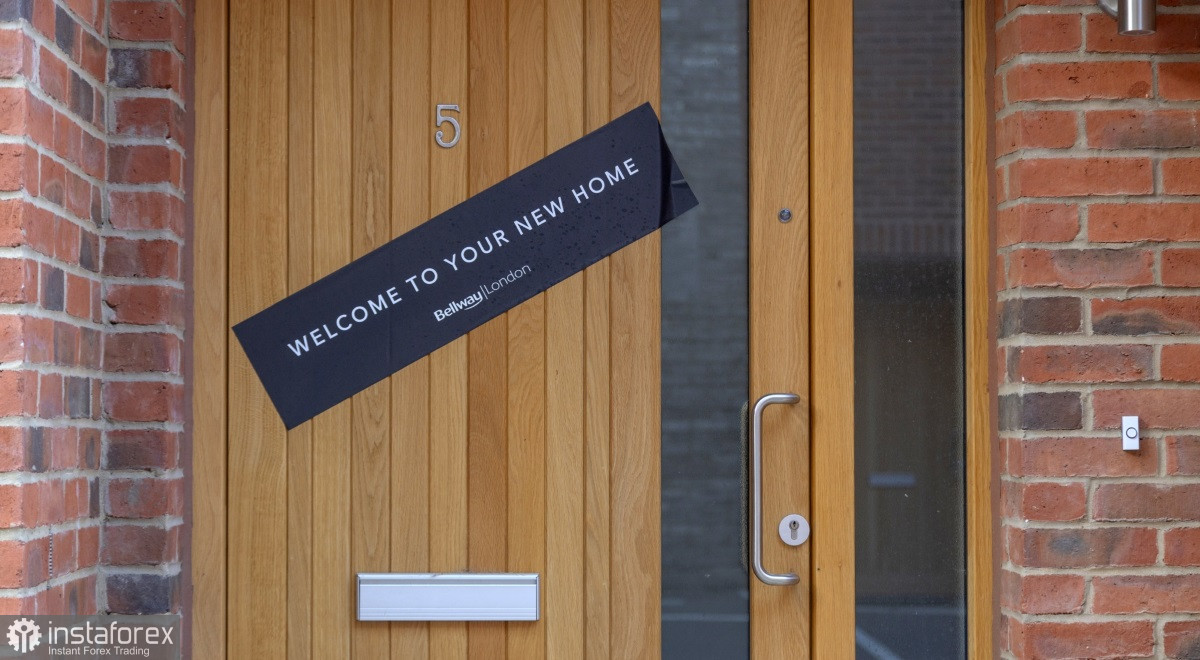The pound sterling advanced amid positive real estate market data, which showed that housing prices in the UK unexpectedly rose in October. This indicates that the real estate market is stabilizing, with the expectation that the Bank of England is nearing the end of its interest rate hiking cycle.
According to the data from the Nationwide Building Society, the average home price increased by 0.9% to £259,423 in October, following a 0.1% rise in September. This jump was the largest since August of last year and exceeded economists' expectations, who had anticipated a 0.4% decline. However, compared to the same period last year, prices fell by 3.3%, which is still positive news compared to the annual decline of 5.3% a month earlier.

The data undoubtedly raised hopes that the decline in the real estate market would be less significant than initially expected. Economists had forecast a 10% drop from the peak in August of last year, reflecting how the market reacts to high borrowing costs. The drop from the peak to the current low is 4.5%.
Notably, the Bank of England kept interest rates unchanged at 5.25% at its meeting in September, which led to lower mortgage rates. It is expected that a similar decision will be made tomorrow. Many traders expect another quarter-point increase only at the beginning of the next year, as there is currently no need for it. Inflation continues to decline, and the economy is starting to feel the effects of tight monetary policy since late 2021, losing momentum fairly quickly.
Robert Gardner, Chief Economist at Nationwide, stated: "The uptick in house prices in October most likely reflects the fact that the supply of properties on the market is constrained," he said. "There is little sign of forced selling, which would exert downward pressure on prices, as labor market conditions are solid and mortgage arrears are at historically low levels." Gardner expects housing prices to remain subdued in the coming quarters.
According to the Bank of England, only 43,300 mortgages were approved in September, which is approximately 30% below the monthly average in 2019. Given the limited availability of housing, this is not surprising. Although prices have fallen from their peak, they still remain high, being 17.7% above pre-pandemic levels.
Does this mean that housing prices will stabilize in the near future as unemployment growth has been relatively restrained, or will the worst happen next year when economic stagnation is expected? We will find it out soon. Experts note that a significant housing shortage continues to persist, and any increase in sales by homeowners is likely to be offset by increased demand from renters and investors.
Regarding the technical picture of the pound/dollar pair, demand for the pound will rise if bulls manage to protect the support level of 1.2120. A further increase could be expected after gaining control over 1.2160. Regaining this range will bring back hope for a recovery towards 1.2200, after which a sharper rise to around 1.2230 can be anticipated. If the pair falls, bears will attempt to take control of 1.2120. If they succeed, a breakout of this range will affect bulls' positions, pushing GBP/USD down towards a low of 1.2090 with the potential to touch 1.2060.
Meanwhile, to regain control, buyers of the euro should stay above 1.0580. Doing so could pave the way to 1.0610. From that level, there is potential to reach 1.0640, but achieving this without support from major players will be quite challenging. The farthest target is located at 1.0670. If the pair declines, significant actions from major buyers could be seen around 1.0550. If no one steps in at that level, it might be wise to wait for a new low of 1.0520 or to consider going long from 1.0490.
 English
English 
 Русский
Русский Bahasa Indonesia
Bahasa Indonesia Bahasa Malay
Bahasa Malay ไทย
ไทย Español
Español Deutsch
Deutsch Български
Български Français
Français Tiếng Việt
Tiếng Việt 中文
中文 বাংলা
বাংলা हिन्दी
हिन्दी Čeština
Čeština Українська
Українська Română
Română

